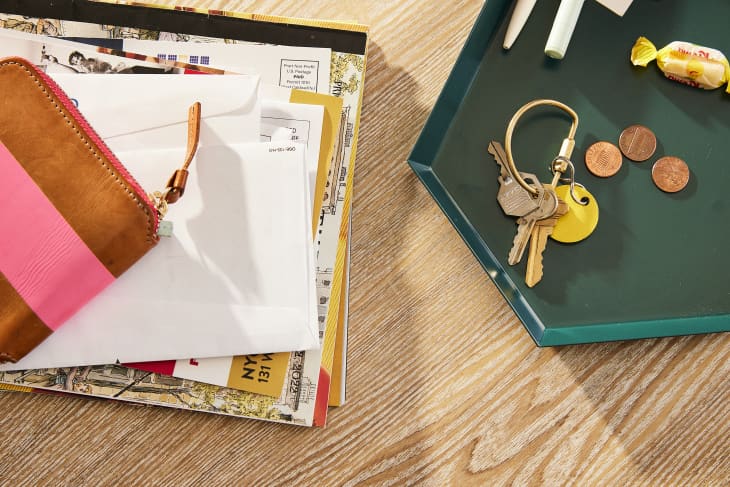How to Finally Put a Stop to Mail Clutter, According to a Pro Organizer
As aprofessional organizer, I place a lot of emphasis on organizing spaces such as closets, kitchens, and garages. When I visit a home to do an initial consultation or begin a project, though, I almost always notice anothersource of clutterthat is often overlooked: It’s much less common for clients to request that I help them tackle their mail, despite the obvious piles scattered on surfaces.
Honestly, I think it’s because mail is so prevalent, seemingly never-ending, and generally doesn’t take up too much space to the point that it becomes a serious issue. But if you were to neglect it a little too long, that can result in late payments, missed deadlines or RSVPs, and, not to mention, excess clutter that you simply don’t need.
If your mail situation is stressing you out more than usual lately, follow my guide (which I’ve used in my own home) to get rid of it once and for all.
Cut it off at the source.
When it comes to getting a handle on your mail clutter, half the battle lies in minimizing the amount you receive regularly. In other words, you need to stop the bleeding. To start, go paperless for any bills or statements you haven’t already.
不xt, for junk mail you never signed up for, like credit card or insurance offers, the Federal Trade Commission recommends using the websitewww.optoutprescreen.comto prevent a deluge of letters for up to five years or permanently. They also provide a mail-in option to get off the lists. When putting in a request, they ask for your personal information like your name, address, date of birth, and Social Security number, but the last two are completely optional to include.
As for the junk that you technically agreed to, such as your favorite store’s catalog or a charity newsletter that you neglected to opt out of after you donated last holiday season, this may mean a little extra legwork. Trust me when I say it’s worth it to take a few minutes to call the company or organization and inform them that you’d like to be removed. Alternatively, you can try the non-profitCatalog Choiceor pay a small fee (it’s currently $4) toDMAchoicefor them to unsubscribe for you.
Additionally, either of the above websites can help with stopping the junk mail that gets sent to your home from past tenants, homeowners, and even deceased relatives who used to reside with you. For regular mail (not junk) that you keep receiving despite it belonging to someone else, try one of the following methods:
- Place a sticky note that reads “return to sender” on the envelope and put it back in your mailbox, as well as a visible sticky note inside of your mailbox with the person’s name and the statement “no longer lives here.”
- Have a conversation about it with your postal worker if you’re home when they’re delivering your mail or head to your local post office and report that you’re receiving mail that isn’t yours.
- As a last resort, file a complaint with theUSPS Office of Inspector General.
Create a drop zone.
Once the volume of the mail itself diminishes, it’s much less overwhelming to deal with what’s actually yours and what’s important. An easy way to set up a system is to have a designated spot to store mail in your home. It can be near the front door orentryway, in your home office, or the kitchen — it doesn’t matter, as long as you can see it during your daily routines.
I’m all about organization tools being both cute and aesthetically pleasing, so I purchased a gold, envelope-shaped wall holder to use as my drop zone. It’s unfortunately no longer available, but I foundsomething similarthat can also sit on a countertop. Whatever you choose, make it fun, functional, and something you’re motivated to use.
Commit to going through it.
This might be the hardest part (and I might be speaking from experience) but I’ll try to keep it simple and stress-free. Dedicate a few times per week to keep on top of the mail. Of course, if you know a piece of mail is urgent, deal with it immediately. Otherwise, you can corral everything else in your drop zone for a couple of days. Then, when you have some extra minutes to spare during your everyday routines — such as when the oven is preheating or you’re waiting for the coffee to brew — use them to attack the pile before it grows any larger.
If you’ve successfully curbed your unnecessary mail, the remaining clutter will be much easier to keep under control. Remember that getting organized is not the goal — staying organized is, and that’s only accomplished throughrepeated habits, like regularly tending to the incoming mail.

